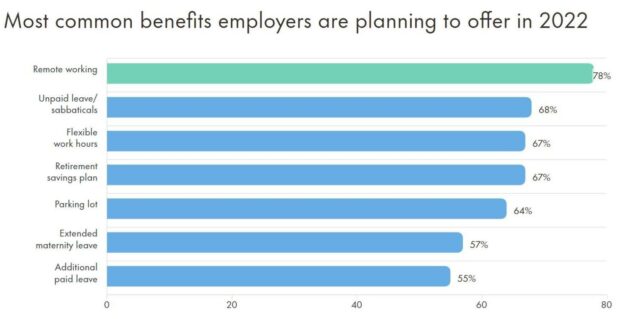Recruitment for permanent positions is set to kick up a notch in 2022 as growing business confidences puts job seekers in pole position, a new report has found.
This new-found power, along with increased certainty in the economic recovery, is pushing candidates to consider their options. More than a quarter (28%) of employees are likely to look for a new job in 2022 – and many are already searching.
The Robert Half 2022 Salary Guide found 31% of businesses are moving to fill vacated roles and hire for newly created positions. Demand is particularly high for talent with “hybrid skill sets”, as well as digital skills that ensure businesses can keep up with the pace of transformation and automation.
Competition for talent is getting fierce
The report found employers expect salaries to remain static – 25% of bosses say they have no plans for pay increases in the near future.
However, with fierce competition in the market, intentions may not match reality, and increases in median monthly pay have show the strength of candidates’ influence when agreeing terms with a new employer.
Matt Weston, UK managing director at the recruitment agency said: “While businesses may not intend to increase the salaries on offer, the booming jobs market means they may need to re-evaluate.
“With candidates holding multiple offers at the moment, we’re finding that a competitive salary alone is not enough; businesses must review the benefits on offer and promote their values to set themselves apart.”
Employers are balancing stagnant salaries with enhanced benefits packages to gain a competitive edge, the report said, with the continuation of remote working most popular incentive.
Cash-wise, more than three in five (62%) employers are now offering bonuses above or in line with pre-pandemic levels to counter stagnant salaries but nearly half (45%) now offer remote working as standard, in line with candidate expectations for the workplace.
One in five (20%) employees say they would consider leaving their current role if they could not have their desired working arrangements. And as employees increasingly vote with their feet and move into new roles, businesses must accommodate employee demands to retain top talent.
…But employees still have to stay close
However, location still matters when it comes to salary. Despite the rise in remote and hybrid working over the past year, nearly half (47%) of employers still take a candidate’s location into account when making a remote hire, which could limit salaries for those opting to live away from the physical workplace.
The great resignation is at hand
Mr Weston continued: “We’re currently seeing demand above and beyond pre-pandemic levels, and despite the so-called ‘great resignation’ creating a tsunami of turnover, we are still experiencing a saturated market where the demand for skilled talent outstrips the supply.”
Five tips for employers searching for new talent:
1. Act fast. It is not uncommon for candidates to have two or three offers on the table, so if a potential employer drags their heels, they will take another role. Dilly dally and be prepared to lose out
2. Be flexible on working conditions. Candidates know what they want from their work environment, and if they are determined to work from home, they will not even consider the role
3. Compromise is key. You can’t always get everything you want, especially when demand is this high. If a candidate meets the majority of the job description, consider giving them a chance or you could end up settling for someone far below your expectations
4. Plan ahead. It can take a while to find the talent you need at the moment, and then you have to contend with a notice period – plan ahead to make sure you don’t end up with a gap
5. Ask for help. If you are not sure about a job description or you are too time poor to commit to a speedy process, consider working with a recruiter to ease the burden.

